Kyoto, Japan
After exploring the sights at Higashiyama, we headed to our epicurean highlight of the day, a lunchtime kyo-kaiseki meal at Sakurada. Housed in a traditional Japanese building, the bare-looking façade was misleading. Only the muted olive green split curtains bearing the characters “桜田” in white hanging outside the entrance tells us that we are at the right place.
As we entered the restaurant, we were greeted by a female kimono-clad server. The interior was dimly lit (a photographer’s nightmare!). There was an atmosphere of exclusivity and the choice of interior decoration speaks of class and elegance. In layman terms, it was an “atas” place with well-dressed patrons (all Japanese).
The server led us to our seats at counter where we were greeted by an elderly lady in kimono, the manageress of the restaurant who was very friendly. All the while, we don’t see any males outside the kitchen and the kitchen was kept out of our view by split curtains, tantalizing our curiosity as to what is coming up next.
The first item left us startled. YY and I looked at each other when we saw this innocent looking cup of liquid with petit seeds in it. We were simply clueless as to what it was for, until I took a sip of it. It has an oily texture and a nutty flavor reminiscent of peanut oil. Apparently, what I had was a cup of genmai, a very weak form of tea. Its purpose is similar to a amuse bouche in French fine dining, sakizuke 先付.
The hassun 八寸 course, which sets the seasonal theme, looked ambrosial. It was meticulously decorated to evoke the imagery of autumn. We started off the hassun with a small dish of sweet sake.
There were a few pieces of kawai (potato chips) looked like dried leaves. It was rather thick like crackers.
The siraae (Cooked Japanese Persimmons mixed with Tofu Dressing) was a light and creamy salad with fruity tones.
The kasutera (Fish and Egg) was nectarous. I think it is more like tamago rather than cake. I love the smooth texture of this item. It was moist and it felt like savoring many fine layers of cake.
There were two slices of saba sashimi (Mackerel) has a smooth texture but tasted rather saline.
The grilled sawara (Spanish Mackerel) was lightly covered with a sweet sauce and the skin was extremely fragrant.
The tonburi (Seeds of Summer Cypress) are sometimes called “land caviar”. These tiny glossy globules were topped with bonito flakes. It was a savory item and the globules burst with flavor as I savor them.
The namako (Sea Cucumber) was served in a tiny bowl-cup with some kind of liquid that as lime-like flavors. It was very refreshing.
The third course (possibly the Futamono 蓋物, a lidded dish) was Prawn ‘cake’ with Tofu, yuzu and radish leaf with consommé served in a black lacquer bowl. The prawn ‘cake’ is like a tofu embedded with fresh succulent prawns in it. This luscious cake seemed to go well with the consommé, a clear and light tasting soup with a subtle citrus flavor of yuzu in it. It was unique and delicious.
The Mukozuke 向付 was served promptly after we finished the third course. Beautifully arranged on a bed of ice and served in an ornate porcelain bowl were four different kinds of sashimi. It was served with wasabi, shoyu and shaved radish. The Tai (Sea Bream) was has a rather firm and sinewy texture. The ika (Squid) has a slimy and chewy texture.
The Buri sashimi (Yellowtail) was my favorite. It was very delicate and mildly sweet and goes extremely well with the shaved radish that gives it a kind fruity flavor.
7th January 2011 Update! Thanks to Chef Derrick Lau from Dezato : There is another sashimi that I wasn’t able to identity, it was yellowish orange in flavor with a slightly lumpy texture and has a briny yet refreshing flavor. According to Chef Derrick, this is probably Kazunoko, the roe of the herring. According to the glossary of Savory Japan, the kazunoko is a rare delicacy that is literally translated as "many children" It is required to be eaten during Oshogatsu, the New Year's Day celebration.
The Yellowtail (seriola quinqueradiata) is a shusse-uo, a "promoting fish" and it has different names according to its size and age. Buri, is the fully grown stage of the yellowtail (over 4 years and up to 3 feet wide). You can find more info at the Sushi Fish Encyclopedia here.
Gohan 御飯, the fifth course, was served in a wooden steamer basket. It was Steamed Rice cooked with mirin and rice vinegar mixed with Unagi. It was then topped with omelette shavings and a slice of unagi topped with minced ginger. This was the toughest course to finish because I was quite full by the fifth course. However, I enjoyed the rice with the omelette and unagi. The dish was flavorsome and hearty.The sixth course (most likely the Shiizakana 強肴) was served in a piece of fine china. Within the bowl, there was a Minced Duck Meatball, an olivette of “potato” and a big slice of radish topped with a stalk of crown daisy served in a light broth. The Minced Duck Meatball has a piquant flavor and the texture was extremely smooth, the meat has been minced very finely. The slice of daikon (White Radish) was very juicy, having absorbed the flavors of the broth thoroughly and has mild peppery flavor.
7th Jan 2011 Update! : The “potato” tasted more like yam to me. The broth was a mild peppery soup. The "potato" is actually yam potato. It was translated as potato from Japanese because, "imo" in Japanese means "potato" in English. In this case, yam is known as Yama-imo (yam potato). The normal potato we known is known as Jaga-imo in Japanese.
The daikon used here is not ordinary daikon. Unlike usual daikon that has a slight spicy flavor, the Kyoto radish was used. It is sweeter. The vegetables used here are apparently very expensive and high quality. It could be the shogoin daikon.
The seventh course (probably the Tome-wan 止椀 although it is normally a soup) was served with the ko no mono 香の物 (pickled vegetables). It was a rice item that consisted of steam rice and daikon covered in a yuzu-flavored gel topped with yuzu zest. The fragrance and mild sourness of the citrus fruit makes this a surprisingly light dish. The combination of the gel and rice was almost like a thick porridge. Underneath the rice was a slice of white radish. I enjoyed the subtleness of this dish.Sometimes, the Ko no mono 香の物 (pickled vegetables) are served alongside with the Tome-wan. There were three kinds of tsukemono, namely haksai (Chinese cabbage), eggplant and white radish). It was eaten together with shoyu.
The eighth course was the Mizumono 水物(dessert). It came as a relief as YY and I were extremely full by now. It was a sweet soy milk pudding embedded with juicy and sour strawberries, served with a fragrant, bittersweet tea sauce. I loved every bit of this dessert. It was simply divine.
The meal ended with a warm cup of green tea.
The whole lunch kaiseki cost us 5500 Yen (roughly 87 SGD). We made our reservation through our guesthouse. The place was quite packed when we visited. There are table seats at the back and counter seats as well. I might not be correct as what is the correct order of the various courses and their proper terms as I am not an expert on it, I am trying to figure it out with some findings on the internet and Yoshihiro Murata's Kaiseki book.
YY and I felt that there seemed to be an unspoken rule to educate foreigners of the Japanese culture among the Japanese. During the whole meal, the servers and the manageress, together with the patrons sitting next to us were very helpful in trying to explain to us the various dishes we had and the proper ways to consuming them with the best of their English capabilities. It was embarrassing and amusing at the same time. One of the waitresses even took out a Japanese-to-English Culinary Dictionary to explain what we were having.
For your interest, Sakurada is a 2 Michelin-starred Restaurant under the 2010 Osaka and Kyoto Michelin Guide. Personally, I do not like to associate a restaurant with Michelin stars in my posts and the like because I felt that it is very distracting and does not give due respect to the restaurant. They speak for themselves. There is nothing to hoohaa about these superficial ratings and titles.
For the food at Sakurada, it felt like a trip within a trip. The food was unique and very different from what I had before. Despite being simple and light, the food was sophisticated yet somewhat familiar, it was a perplexing and very interesting experience, I felt engaged in some way throughout the kaiseki meal. In short, the whole epicurean journey to Sakurada was an eye-opener and very intriguing. Perhaps the same experience was what that kept people going for fine-dining.
桜田 Sakurada
Hitosuji-sagaru Karasuma,
Bukkoji Higashi-iru.
075-371-2552
京都府京都市下京区
烏丸仏光寺東入ル一筋下ル匂
天神町634-2
【LUNCH】 11:30~13:30
【DINNER】 17:00~19:30
ランチ営業、日曜営業

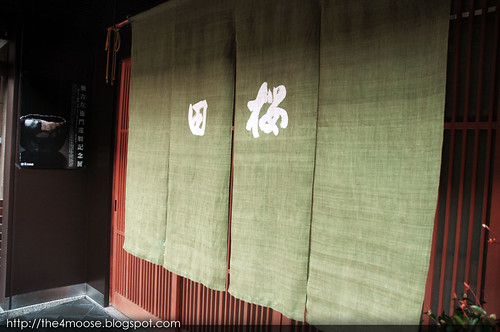
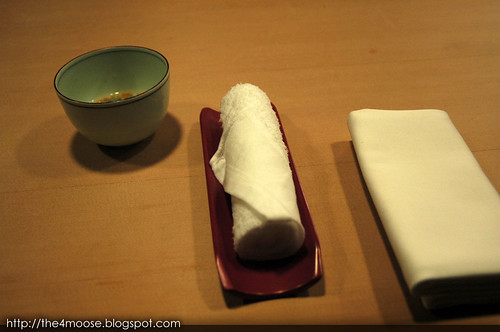




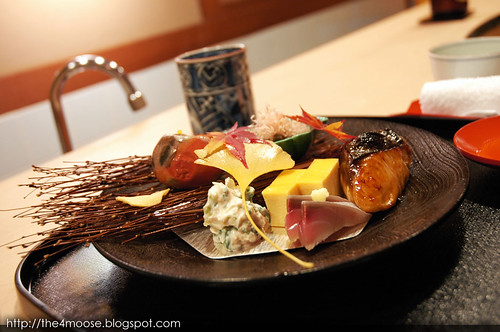
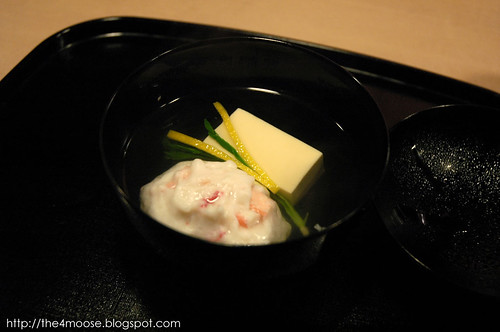


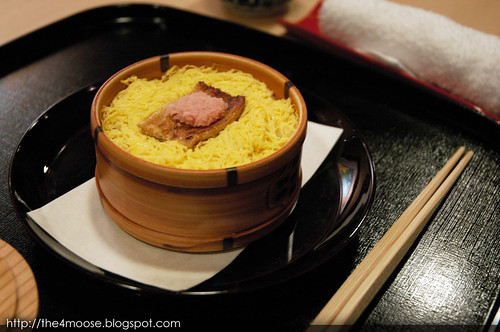






















0 comments:
Post a Comment
Note: Only a member of this blog may post a comment.